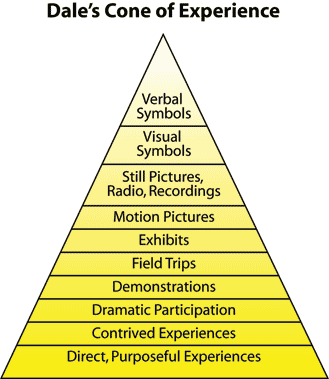In the
demonstration of a new product, the speaker shows the product, tells all
the good thing about the product to
promote it in order to convince the
audience that the product is worth buying.
In the activists’
demonstration, the activists air their grievances and publicly denounce the
acts of a person or of an institution, like the government, against whom they
are demonstrated.
When a master
teacher asked to demonstration in teaching on a teaching strategy, she shows to
the audience how to use a teaching strategy effectively.
In all three
instances of demonstration, there is an audience, a process of speaking, and a process of
showing a product or a method or proofs to convince the audience to buy the
product, use the strategy or rally behind their cause.
What the n is a
demonstration? Webster’s International Dictionary defines it as “a public
showing emphasizing the salient , merits, utility, efficiency, etc, of an
article or product..” in teaching it is showing how a thing is done and
emphasizing of the salient merits,
utility and efficiency of a concept, a
method or a process or an attitude.
What guiding
principles must we observe in using a demonstration as a teaching – learning
experience? Edgar Dale (1969) gives at least three:
1. Establish rapport. Greet your audience. Make them feel at
ease by your warmth and sincerity. Stimulate their interest by making your
demonstration and yourself interesting. Sustain their attention.
2. Avoid COLK fallacy
(Clear Only If Known). What is this fallacy? It is the assumption that what is
clear to the expert demonstrator is also
clearly known to the person for whom the message is intended. To avoid the
fallacy, it is best for the expert demonstrator to assume that his audience
knows nothing or a little about what he is intending to demonstrate for him
to be very thorough, clear and
detailed in his demonstration even to a point of facing the risk of being
repetitive.
3. Watch for key options. What are key options? Dale (1996)
says “ they are the ones at which an error
is likely to be made, the places at which many people stumble and where the
knacks and tricks of the trade are especially important”. The good demonstrator
recognizes [possible stumbling blocks to learners and highlights them in some
way. What are usually highlighted are the “don’t’s” of a process or a strategy.
To ensure that the demonstration works, we ought to plan and
prepare very well before we conduct the demonstration. In planning and
preparing for demonstration, Brown (1969) suggests methodical procedures by the
following questions:
1. What are our objectives? How does your class stand with
respect to these objectives? This is to
determine entry knowledge and skills of your students.
2. Is there a better way to achieve your ends?
3. If there is a more effective way to attain your purpose,
then replace the demonstration method the more effective one.
4. Do you have access to all necessary materials and equipments to make the
demonstration? Have a checklist of necessary equipment and material. This may
include written materials.
5. Are you familiar with the sequence and content of the
proposed demonstration? Outline the steps and rehearse your demonstration.
6. Are the limits realistic?
You have planned and rehearsed your demonstration, your
materials and equipment are ready, you
have prepared your students, then you can proceed to the demonstration itself.
Dale (1969) gives several points to observe:
1. Set the tone for good communication. Get and keep your
audience’s interest.
2. Keep your demonstration simple.
3. Do not wonder from the main ideas.
4. Check to see that your demonstration is being
understood. Watch your audience for
signs of bewilderment, boredom or disagreement.
5. Do not hurry your demonstration. Asking questions to
check understanding can serve as a “brake”.
6. Do not drag out the demonstration. Interesting things
have never dragged out. They create
their own tempo.
7. Summarize as you go along and provide a concluding
summary. Use the chalkboard, the over head projector, charts, diagram, power
point and whatever other materials are appropriate to synthesize your
demonstration.
8. Hand out written materials at the conclusion.
What questions can you ask to evaluate your classroom
demonstration? Dale (1969) enumerates:
Was your
demonstration adequately and skillfully prepared? Did you select demonstrable
skills or ideas? Were the desired behavioral outcomes clear?
Did you
follow the step by step plan? Did you make use of additional materials
appropriate to your purpose – chalkboard, felt board, pictures, charts,
diagrams, models, overhead transparencies, or slides?
Was the
demonstration itself correct? Was your explanation simple enough so that most
of the students understood it easily?
Did you keep
checking to see that all your students were concentration on what you were
doing?
Could every
person see and hear? If a skill was
demonstrated for imitation, was it presented from the physical point of view of
the learner?
Did you help
students do their own generalizing?
Did you take
enough time to demonstrate the key points?
Did you
review and summarize the key points?
Did your
students participate in what you were doing by asking thoughtful questions at
the appropriate time?
Did you
evaluation of a student learning indicate that your demonstration achieved its
purpose?



